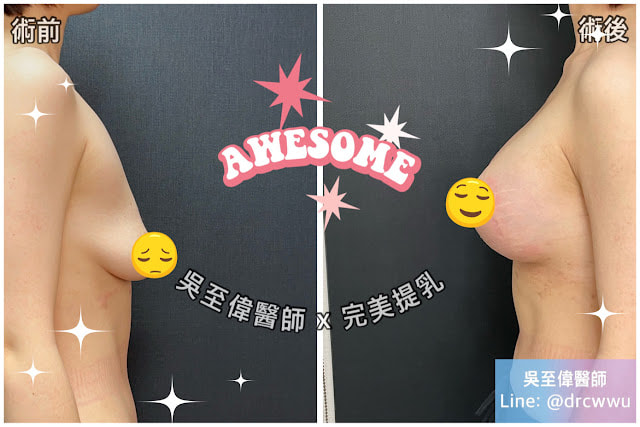果凍矽膠隆乳後遺症:Information from FDA
This booklet highlights the most common problems associated with silicone gel-filled and saline-filled breast implants: those that occur in the breast or chest area, known as “local complications.” The most common local complications and adverse outcomes are capsular contracture (hardening of breast area around the implant), reoperation (additional surgeries), implant removal and rupture or deflation of the implant. Other local complications include implant wrinkling, asymmetry, scarring, pain, and infection at the incision site. These local complications often result in reoperation or implant removal.
Local Complications and Adverse OutcomesThe following is a list of local complications and adverse outcomes that occur in one percent or more of patients at any time after breast implant surgery. They are listed in alphabetical order—not in order of prevalence.
Local Complications and Adverse OutcomesThe following is a list of local complications and adverse outcomes that occur in one percent or more of patients at any time after breast implant surgery. They are listed in alphabetical order—not in order of prevalence.
- Asymmetry—when breasts are uneven in appearance in terms of size, shape, or breast level
- Breast feeding difficulties
- Breast pain
- Breast sagging, also called “ptosis”
- Calcium build-up in breast tissue, also called “calcification”
- Capsular contracture—hardening of the breast area around the implant
- Chest wall deformity—when the chest wall or underlying rib cage appears deformed
- Deflation of the breast implant—when filler material leaks from the breast implant often due to a valve leak or a tear or cut in the implant shell
- Delayed wound healing
- Extrusion—when the skin breaks down and the implant appears through the skin
- Hematoma—collection of blood near the surgical site
- Iatrogenic injury or damage—when new injury or damage occurs to the tissue or implant as a result of implant surgery
- Implant displacement or malposition—when the implant is not in the correct position in the breast
- Implant palpability or visibility—when the implant can be felt through the skin
- Implant removal—with or without implant replacement
- Implant visibility—when the implant can be seen through the skin
- Implant wrinkling or rippling
- Infection, including Toxic Shock Syndrome—when during breast implant surgery, wounds are contaminated with micro-organisms, such as bacteria or fungi
- Inflammation or irritation
- Necrosis—when there is dead skin or tissue around the breast
- Nipple or breast changes, including change in or loss of nipple sensation
- Redness or bruising
- Reoperation—additional surgeries
- Rupture of the breast implant— when there is a tear or hole in the implant’s outer shell
- Scarring
- Seroma—the collection of fluid around the breast implant
- Skin rash
- Swollen or enlarged lymph nodes, also called “lymphedema or lymphadenopathy”
- Thinning and shrinking of the skin, also called “breast tissue atrophy”
- Unsatisfactory appearance due to implant style or size
隆乳論文:水滴形果凍矽膠隆乳後遺症風險因子分析
下面是2017年一月刊登於整形外科期刊PRS針對水滴型果凍矽膠隆乳後遺症的統計研究,也發現與上篇論文類似的結果。此篇論文討論了水滴型果凍矽膠隆乳後遺症的風險因子,特別針對莢膜攣縮,遲發性漿液腫與矽膠轉位做統計分析。結果發現造成莢膜攣縮較重要的因子為乳腺下置放(subglandular placement),乳暈旁切口(periareolar incision site),高齡(older subject age),較高的身體質量指數(higher body mass index)等等。
Risk Factor Analysis for Capsular Contracture, Malposition, and Late Seroma in Subjects Receiving Form-Stable Silicone Breast Implants.
McGuire P1, Reisman NR, Murphy DK.
Plast Reconstr Surg. 2017 Jan;139(1):1-9
McGuire P1, Reisman NR, Murphy DK.
Plast Reconstr Surg. 2017 Jan;139(1):1-9
隆乳論文:果凍矽膠與鹽水袋何者比較安全?
果凍矽膠隆乳的安全性與後遺症,一直為不少想隆乳的女性朋友所擔憂,此篇為2017年10月在整形外科期刊PRS刋出的文章,詳細比較了果凍矽膠與鹽水袋隆乳的後遺症,發現兩都沒有明顯差異。這篇文章是美國圓盤形果凍矽膠在上市後的研究(Postapproval Study),總共搜集了55279位接受過果凍矽膠隆乳或重建的女性朋友,其中有42873位初次隆乳,6837位初次乳房重建,4828位二次隆乳(隆乳重做),與741位二次乳房重建。統計發現不管是在併發症,後遺症與各項癌症的統計,圓形果凍矽膠皆與鹽水袋的發生率相近。
Five-Year Safety Data for More than 55,000 Subjects following Breast Implantation: Comparison of Rare Adverse Event Rates with Silicone Implants versus National Norms and Saline Implants.
Singh N1, Picha GJ, Hardas B, Schumacher A, Murphy DK.
Plast Reconstr Surg. 2017 Oct;140(4):666-679
Singh N1, Picha GJ, Hardas B, Schumacher A, Murphy DK.
Plast Reconstr Surg. 2017 Oct;140(4):666-679
